Part One: Identify Threats
Home Security Risk & Neighborhood Cooperation Assessment
This assessment will guide you in measuring:
-
The Security Threats to You, Your Family, and Your Home.
-
The Severity of Each Threat
-
The Probability of the threat becoming a reality.
You will need to create a risk and cooperation assessment involving:
A) Your Community
-
Your Neighborhood
-
Your Neighbors
-
Your Police Department
-
Your Fire Department.
-
Emergency Medical Assistance
B) Your Home’s:
-
Exterior Security
-
Interior Security
(Note: A good risk assessment may help you reduce your insurance rates.)
A) Community 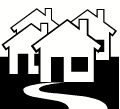
i) Your Neighborhood.
Checklist (Y) (N) (N/A)
-
Is Your neighborhood made up from homeowners as opposed to renters?
-
Are there thriving local businesses in you neighborhood?
-
Are there sidewalks and crossing in your area?
-
Is your neighborhood active during the day? (people gardening, walking, sitting on verandas)
-
Is your neighborhood active during the Evening?
-
Is is free from loiterers?
-
Do you know any of your neighbors by name?
-
Is your neighborhood off the beaten track? That is, is it self contained instead of a cut through to other neighborhoods?
-
Does your neighborhood support any crime watch groups?
-
Is there a police station within 5 miles of your home?
-
Is there a fire station within 2 miles of your home?
-
Are you streets well lit at night?
Count the Number of “No” Answers.
0-3 = Low Threat
4-5 = Medium Threat
6+ = High Threat
ii) Neighbors 
Questions for Neighbors
-
Have any of your neighbors been burglarized is the last 6 months?
-
Do you neighbors know of any incidents of fire, vandalism, burglary, or accidents that occurred in your home before you moved in? If so which ones?
-
Which of the following crimes have occurred in your neighborhoods history?
-
Vandalism
-
Robbery
-
Break ins
-
Assaults
-
Thefts
-
Murders
-
Sexual Offenses
Count a Yes or No for each offense, even if they occurred from the same offender.
0-3 = Low Threat
4-5 = Medium Threat
6+ = High Threat
iii) Police Department 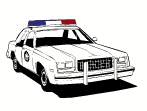
Questions to ask Your local Police Department.
You will need to use your judgment here. Staffing Levels are determined differently in every area.
Ask yourself, “Do the police seem helpful and responsive to your questions?” “Do the police officers feel they are understaffed, unable to keep up with the crime in the area? “
-
What are staffing levels like?
-
How many cars are usually on patrol during day and night shifts? (usually half the officers assigned to a station are on patrol at any given time)
-
What is the average response time to emergency calls in the area?
-
Do they do vacation checks on properties, if the owners notify them that they are out of town?
-
What type of community crime prevention programs are there for the area? (neighborhood watch, etc)
-
Does the police department have a record of all the reported crimes in your area?
These crimes might include:
-
Vandalism
-
Robbery
-
Break and Enter
-
Assault
-
Theft
-
Murder
-
Rape
(Sometimes you can find this information by back checking local community papers at their office or library archives.)
-
Do Police see any emerging patters of criminal behavior with regards to:
-
Time of Day?
-
Method off Crime?
-
Victim Profile?
-
Objects Stolen/Vandalized?
-
Other?
If you get the feeling that the police already have more than they can handle, you may want to consider moving to a safer area.
Alternatively, if you received warm feedback from your neighbors, actively participating in (or starting) a neighborhood community watch program might be a way to “take back” your community and increase the value of your homes in the process.
iv) Fire Department 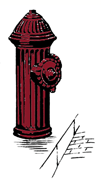
Questions for your local fire department
-
What type of emergency dispatch service does your fire station operate?
-
How many lines go into it and how many people are staffed on those lines?
-
How many fire stations are in your area?
-
Do the firefighters consider themselves to be well equipped?
-
How far are you from the nearest fire station?(the ISO requires a standard of a station within 5 miles of each home as a minimum protection limit, of course this isn’t always realistic)
-
What is the station’s average response time to your area?
-
How good is your area’s water supply?
-
Are there any issues with water pressure during times of peak use?
A good response time is 10 minutes or under.
A staffed communication network a better dispatch service than a potentially unmanned radio relay system.
If the fire department appears to be under-equipped or understaffed, ask them about the requirements and training for a community volunteer fire department.
v) Emergency Medical Assistance 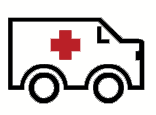
Question checklist for public relations officer at your local Emergency Medical Facility.
-
How far is the nearest
-
Ambulance Dispatch Center?
-
Hospital?
-
Emergency Medical Center?
-
What is the average response time for an ambulance?
-
Is the nearby hospital emergency room well staffed and adequately equipped?
-
Which Services does the hospital offer?
-
Do they specialize in any areas?
-
Do they have access to helicopter transport?
-
Is there a poison control center nearby? If so what are its services?
A good response time is under 5 minutes. Anything over 15 minutes is considered poor.
If you believe your local Emergency Medical Facility to be inadequate, consider starting a Neighborhood “First Aid” instruction program with the other members of your community.
B) Your Home
Draw Up A floor Plan of your home
An effective floor plan shows the access points for every room, allowing you to assess:
-
Your fire Exit Strategies
-
All Possible intruder access points
-
How many Sensors you need and where to put them.
-
Ideas for the placement of Motion Detectors, Smoke Detectors, Hidden Surveillance, and Alarms.
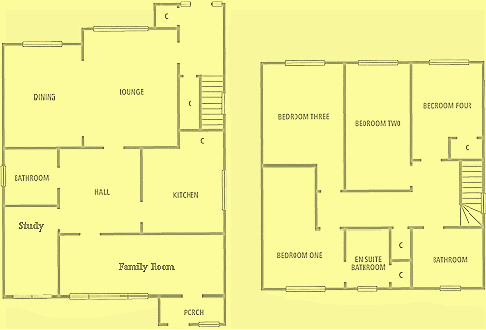
i) Exterior Security – Risk Assessment
For Each section count the number of “NO” answers
Lighting and Landscaping
-
Does your landscaping make doors, windows and your street numbers clearly visible?
-
Does your landscaping prevent someone from hiding near your doors or walkways
-
Are parking areas well illuminated?
-
Is there a lighting system in place for your homes exterior at night?
-
Do you have a light by each doorway?
-
Is there a motion sensor lighting or camera system?
0-1 = Low Risk
2-3 = Medium Risk
4+ = High Risk
Construction 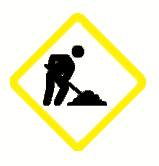
-
Are your doors made of solid hardwood or reinforced with steel?
-
Do you have metal reinforcement strike plates surrounding the locks on all doors?
-
Do your doors open inward with hinges on the inside the home?
-
Have you installed wide angle peepholes in all exterior doors?
-
Are portable air conditioners built directly into window frames or locked in place?
-
Do you have an intercom or camera system near outside entrances?
0-2 = Low Risk
3 = Medium risk
4+ = High risk
Locking mechanisms and Guarded Entrances 
-
Does your garage door have a secure lock?
-
Is your garage door encrypted to protect you from code grabbers?
-
Is there a secure lock between the doors that connect from the garage directly into to your home?
-
Are there physical stop rods and secure locks on all sliding doors?
-
Are your windows lockable?
-
Are there strong locks on your basement windows?
-
Did you change your house locks when you moved in?
0-2 = Low Risk
3-4 = Medium Risk
5+ = High Risk
Farming and Rural Areas 
These Areas can have special concerns.
-
Are all outside areas well illuminated at night. ?
-
Do storage sheds, barns, and grain bins have secure locking mechanisms?
-
Have you itemized your tools and equipment by marking them with identification numbers?
-
Are access roads gated?
-
Do you keep a constant count of livestock?
-
Are all fences free of rot and in strong condition?
-
Is all your equipment secured under lock and key during evening hours?
-
Have you checked the references of all the employees working on your property?
0-2 = Low Risk
3-6 = Medium Risk
7+ = High Risk
ii) Interior Security Assessment.
Count the number of “No” Answers
Are You Fire safe? 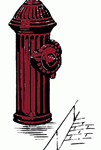
-
Do you have enough functioning smoke detectors to cover your whole home?
-
Are there fire extinguishers available in critical areas?
-
Do you Clean your chimney once per year?
1+ = High Risk
Are you Crime Safe? 
-
Does every bedroom door have a secure door and lock?
Do you have an alarm system, automatic phone dialer, or neighbor-signaling device?
-
Have you marked and recorded your possessions with and identifying numbers?
-
Do you have a list of valuable property in your home?
-
Do you have a dog?
-
Do you have a safe?
-
Do you store all large amounts of money and valuable collections in a secure place outside your home?
0-1 = Low Risk
2-3 = Medium Risk
4+ = High Risk
Are you Accident Safe? 
-
Does every bedroom have a phone and flashlight?
-
Do you have emergency numbers near your phone?
-
Are all medications and prescriptions stored in a locked medicine cabinet out of reach of children?
-
Have you installed ground-fault circuit interrupters on all bathroom electrical outlets?
-
Do you have your furnace/air conditioner serviced annually?
-
Do you have any portable heaters inspected periodically?
-
Do you monitor your children’s access to fire and heat?
-
Do you know where all the cut off valves and switches are for the utilities that enter your home?
-
Are all guns in your home stored unloaded and safely locked away?
0-1 = Low Risk
2-3 = Medium Risk
4+ = High Risk
1 thought on “How to Design a Complete Home Security Plan”